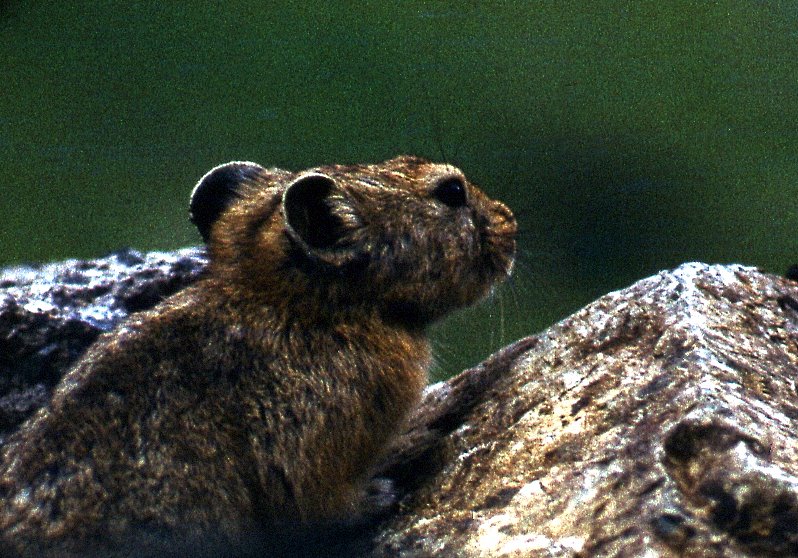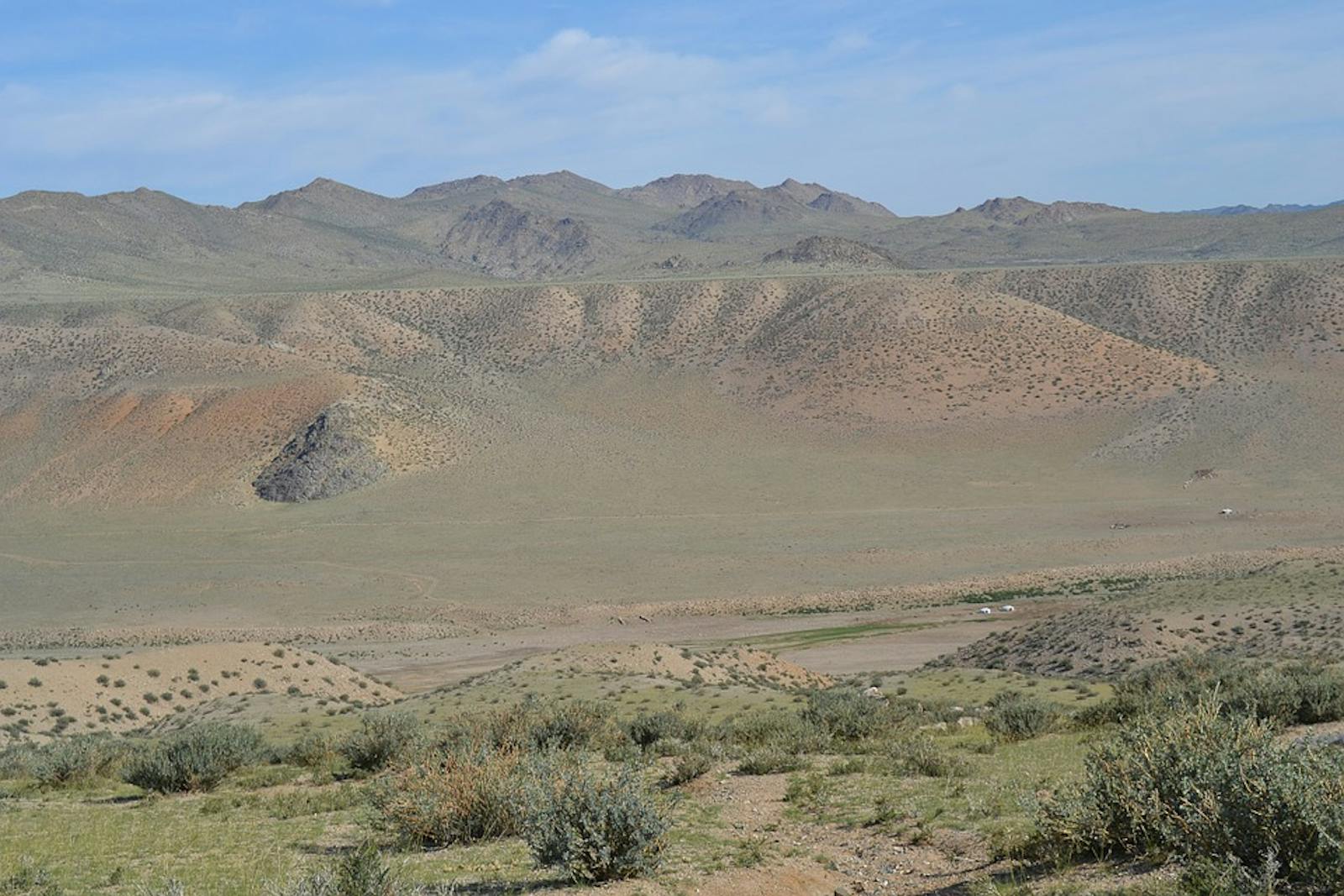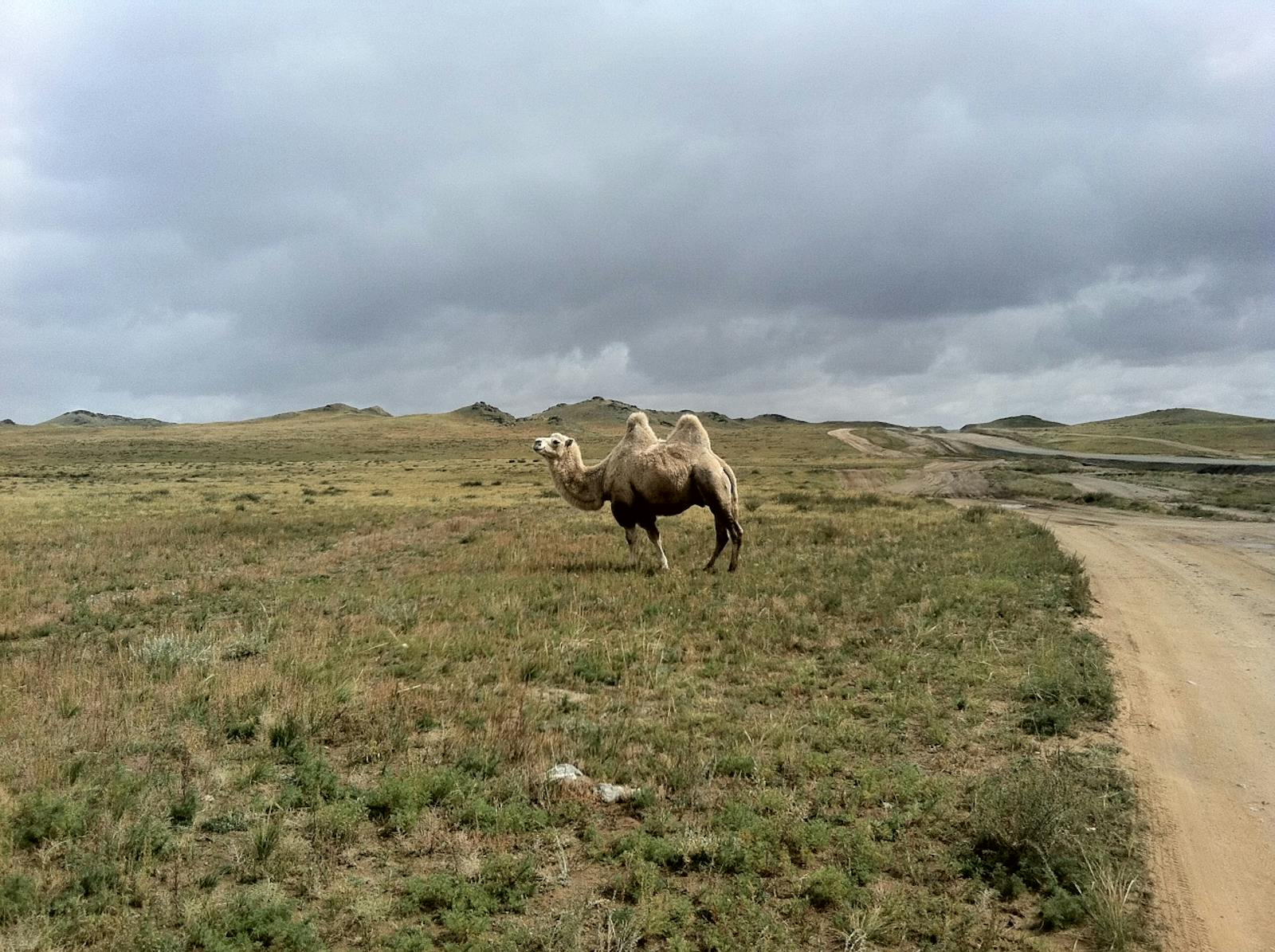Gobi Lakes Valley Desert Steppe
The ecoregion’s land area is provided in units of 1,000 hectares. The protection goal is the Global Safety Net (GSN1) area for the given ecoregion. The protection level indicates the percentage of the GSN goal that is currently protected on a scale of 0-10. N/A means data is not available at this time.
Bioregion: Junggar Semi-Desert & Ermin Valley Steppe (PA38)
Realm: Eastern Eurasia
Ecoregion Size (1000 ha):
13,970
Ecoregion ID:
825
Protection Goal:
69%
Protection Level:
1
States: Mongolia
The crags and gravelly slopes of the Gobi Altai mountains, and the arid desert steppes of the Valley of Lakes below, are a starkly beautiful but harsh environment to live in. Needlegrasses, saxaul trees, and salt-tolerant dwarf shrubs are adapted to cope with the lack of water and saline soils found in this location, where several rivers flow down from the Khangai Mountains, but none leave. Siberian ibex climb the rocky heights and goitered gazelle graze the desert steppes below.
This ecoregion sits between the Khangai Mountains and the eastern end of the Mongolian Altai mountain range, covering the eastern end of the Gobi Altai mountains, including their highest peak, Ikh Bogd, 3,957m tall. The valley floor has an altitude of 1,000–1,400m above sea level.

The flagship species of the Gobi Lakes Valley Desert Steppe ecoregion is the Durian pika. Image credit: T.Voekler, Creative Commons
A chain of saline lakes lies in this intermontane depression, fed by rivers that rise in the Khangai Mountains. They vary in size according to season and in some years some lakes dry up completely. In Bayankhongor there is a local steppe climate with average monthly temperatures and annual precipitation of -17.9–16.1°C and 222 mm. Further south in Jinst, there is a desert climate with average monthly temperatures of -15.6–18.7°C and mean annual precipitation of 138 mm. Rainfall peaks in July.
On mountainsides and flat areas between lakes, grassland desert steppe plant communities are dominated by needlegrass species, Stipa glariosa and Stipa gobica, with herbs and stunted shrubs that can cope with arid conditions such as forage kochia, Caragana leucophloea, Cleistogenes squarrosa, Krachennikovia ceratoides, and Allium polyrrhisum. There are salt-laden soils in areas near existing lakes and at the bottom of ancient lake depressions, where plants specializing in saline conditions grow, for example, Anabasis brevifolia, Achnatherum splendens, Nitraria sibirica, and Salsola passerina. In other areas there are sand dunes covered in saxaul trees.
This is a harsh environment to live in. Siberian ibex clamber skillfully through the rocky heights of the Gobi Altai mountains, seeking out any palatable grasses and shrubs available, and moving to lower elevations during the winter to avoid the worst storms. Goitered gazelle graze the desert steppes, also moving seasonally in search of food. There are many small mammals, occupying habitats they are adapted to, for example, Daurian pika live in the intermontane depression whereas alpine pika are specialists of rocky places in the mountains.
The lakes of the ecoregion are important stopover locations for migrating bird species such as endangered Pallas’s fish eagle and Saker falcons, ruddy duck, and demoiselle crane. Swan geese breed at the lakes, bearded vulture nest in the rocky heights, and white-throated bushchat nest in the desert steppes.
Winter snow disasters in the early 2000s (‘Zud’) wiped out a large proportion of the region’s livestock and economy. Fewer people now rely on animal herding as a major source of income, although goat numbers are increasing again. Until recently, protection of natural areas was restricted to the lakes, which are RAMSAR wetlands of international importance.
In 2008, a National Conservation Park was created at Ix Bogd mountain, and in 2012 a nature reserve at Khureemandal Mountain. Nonetheless, protection for the lower desert steppes is still lacking. The Valley of the Lakes has become famous for its fossil beds, with 175 fossil mammalian species identified in the area.
Overgrazing near the lakes is a real issue, especially as the area has experienced serious drought. When last assessed, Taatsiin Tsagaan Lake had dried out completely. Extraction of sand, gravel, and minerals for concrete production is ongoing, as are gold and copper mining. Due to habitat degradation, the future of the ecoregion’s Pallas’s cat is uncertain and Dalmatian pelicans no longer breed here.
The priority conservation actions for the next decade will be to: 1) create protected areas for desert steppe grasslands with connectivity between different zones of altitude; 2) prevent overgrazing; and 3) prevent pollution from mining and mineral extraction.
Citations
1. Joint Research Centre of the European Commission. 2019. The Digital Observatory for Protected Areas (DOPA) Explorer 4: Gobi Lakes Valley desert steppe. [Online]. [Accessed 9th December 2019]. Available from: https://dopa-explorer.jrc.ec.europa.eu/ecoregion/81315
2. Gunin, P.D. and Saandar, M. eds. 2019. Ecosystems of Mongolia Atlas. Ulaanbaatar: KMK Scientific Press.
3. WWF. 2018. Eastern Asia: Central Mongolia. [Online]. [Accessed 9th December 2019]. Available from: https://www.worldwildlife.org/ecoregions/pa1315


.png?auto=compress%2Cformat&w=300)
